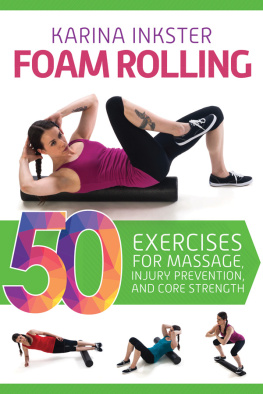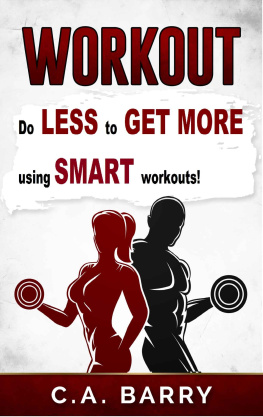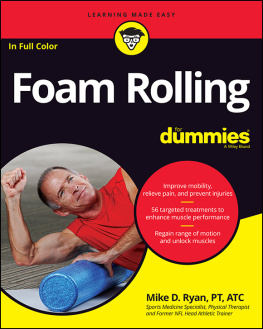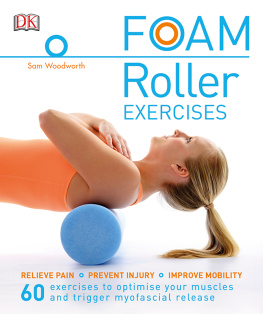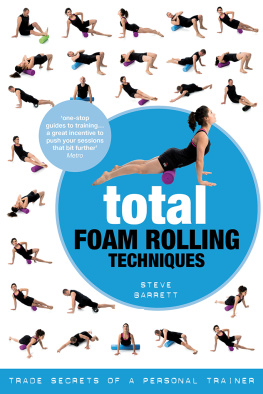Copyright 2015 by Karina Inkster
Photos copyright 2015 by John Watson of Image Maker Photographic Studio
All rights reserved. No part of this book may be reproduced in any manner without the express written consent of the publisher, except in the case of brief excerpts in critical reviews or articles. All inquiries should be addressed to Skyhorse Publishing, 307 West 36th Street, 11th Floor, New York, NY 10018.
Skyhorse Publishing books may be purchased in bulk at special discounts for sales promotion, corporate gifts, fund-raising, or educational purposes. Special editions can also be created to specifications. For details, contact the Special Sales Department, Skyhorse Publishing, 307 West 36th Street, 11th Floor, New York, NY 10018 or .
Skyhorse and Skyhorse Publishing are registered trademarks of Skyhorse Publishing, Inc., a Delaware corporation.
Visit our website at www.skyhorsepublishing.com.
10 9 8 7 6 5 4 3 2 1
Library of Congress Cataloging-in-Publication Data is available on file.
Cover design by Rain Saukas
Cover photo by John Watson of Image Maker Photographic Studio
ISBN: 978-1-63220-627-5
Ebook ISBN: 978-1-63220-761-6
Printed in China
CONTENTS
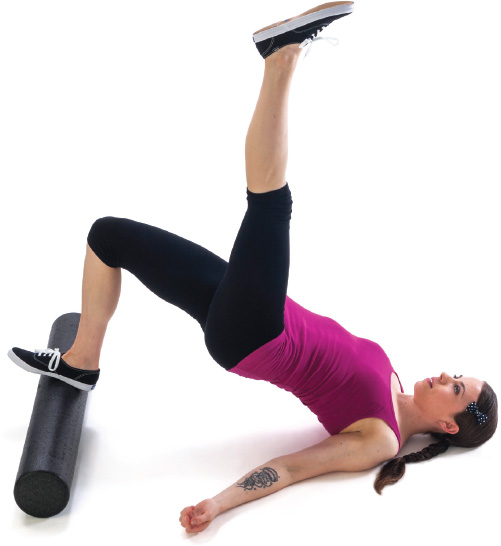
CHAPTER 1:
FOAM ROLLER BASICS
WHAT IS FOAM ROLLING AND HOW DOES IT WORK?
Foam rolling is a technique quickly making its way from physical therapists offices into mainstream gyms, personal training studios, and homes everywhere. Foam rolling is most often used as a form of self massage, working out the soreness and tight spots in our muscles. Its much more economical than seeing a masseuse, athletic trainer, or other body-worker; plus, youre able to control precisely where to apply pressure, and how much.
A foam roller is a cylinder of dense foam, usually six inches in diameter. Typical lengths are one foot or three feet. You place the foam roller on the floor and use your own bodyweight to apply pressure to various muscle groups, slowly rolling back and forth across each muscle (e.g. upper back or hamstrings).
You may have heard many different terms being used to describe this practice, including trigger point release or active release. You may have also heard the term soft tissue mobilization, which is the physical therapy term for massage. The technical term for foam rolling, which Ill use in this book, is self-myofascial release, based on the word fascia. And what is fascia, exactly? Lets take a look.
Foam rolling and its related physiological mechanisms are a relatively new area of research. Heres what we currently understand about fascia. Fascia is a dense layer in the human body that covers every structure, including muscles, organs, nerves, and blood vessels. It allows all our structures to function smoothly and slide without friction. When we overstress our musclesdue to overuse or perhaps an injurythe layers of fascia in our bodies can tear. Several layers of fascia can stick together when these tears dont heal properly. These are called adhesions. They can be painful, and they prevent our muscles from working properly. Self-myofascial releaseputting pressure on adhesionsis thought to release adhesions, returning our muscles to optimal performance. Much like massage, foam rolling can help the muscles themselves to return to normal functioning if theyre too tight, but much of the foam rolling benefit is thought to come from the action of fascia.
Much more research is needed to better understand fascia and how foam rolling can affect it. For now, we can be fairly certain that foam rolling leads to neuromuscular relaxation. That means it can stimulate your brain to relax your muscles. While researchers get busy figuring out exactly what mechanisms are at play during foam rolling, lets focus on the fact that it feels great, eases tension in your muscles, and can potentially increase your mobility and accelerate your recovery after physical training.
WHAT IS FOAM ROLLING USED FOR?
Foam rolling is a way to release muscle tension and possibly even improve athletic performance.
Research studies are beginning to look into specific benefits of foam rolling, includingperhaps surprisinglyarterial function. Participants rolled the adductors (inner thigh muscles), hamstrings, quadriceps, iliotibial band (running along the outside of the thigh from the hip to the knee), and trapezius (an upper back muscle), self-adjusting the pressure applied to each muscle group by using their hands and feet to offset some of their bodyweight. After foam rolling, compared to the control trial, brachial-ankle pulse wave velocity significantly decreased, and plasma nitric oxide concentration significantly increased. This suggests that foam rolling can reduce arterial stiffness and improve vascular endothelial function.
Other benefits often associated with foam rolling are increased blood flow to muscles, injury prevention, increased flexibility, and reduced soreness after workouts. Many of these benefits need to be studied in greater depth by clinical researchers, but we can see from anecdotal evidenceand the rising popularity of foam rollingthat people who foam roll regularly experience some of these positive effects. Many of these benefits will be discussed in further detail in Chapter 2: Benefits of Foam Rolling.
Here are some thoughts from my fitness coach colleagues on using foam rollers with their clients (and on themselves), the benefits of regular foam rolling, and their dos and donts.
Angela Kromidas (ACE Certification, PICP Level 3, Functional Movement Specialist) of You Wellness in Vancouver, BC uses foam rolling as a tool for recovery between her own athletic training sessions, as well as with her fitness coaching clients. Heres what she says about it.
The foam roller became a part of my world as a tool for my own recovery. Identifying the tight and/or sore spots and using the roller in those areas made a massive difference in my own growth and progress. Subsequently adding it to my training toolbox for my clients was a natural progression.
I now routinely use the foam roller with my clients, which has allowed them to see increased blood circulation. This aids in muscle recovery and leads to an overall increase in performance. Such a portable tool allows me to achieve greater participation from my clients. With a brief knowledge transfer, they are able to take the foam roller home and work with it on their own. This increased teamwork allows us to achieve enduring results, which leads to enhanced client loyalty.
Certified strength and conditioning specialist Faolan Dunphy of Speed Power Endurance Sport Performance, Conditioning, and Consulting shares with you his thoughts on the uses of foam rolling and the dos and donts he teaches his clients.
I allow my clients and athletes the choice to use foam rollers as an adjunct to their training programs; I include space in their written programs for them to include it, but I dont prescribe it as such. If they have time to include it as part of their soft tissue management and they find it beneficial, I will accept and encourage the psychological benefit even if there is limited supporting research for its physiological benefit at this time. I will also use it to treat myself when I cant get manual therapy. Reported benefits of foam rolling include decreased residual muscle tone or tightness, increased mobility and/or flexibility, and a general sense of ease.

